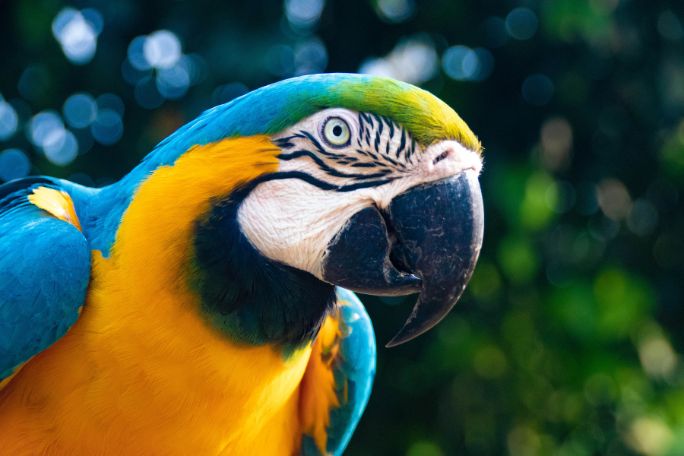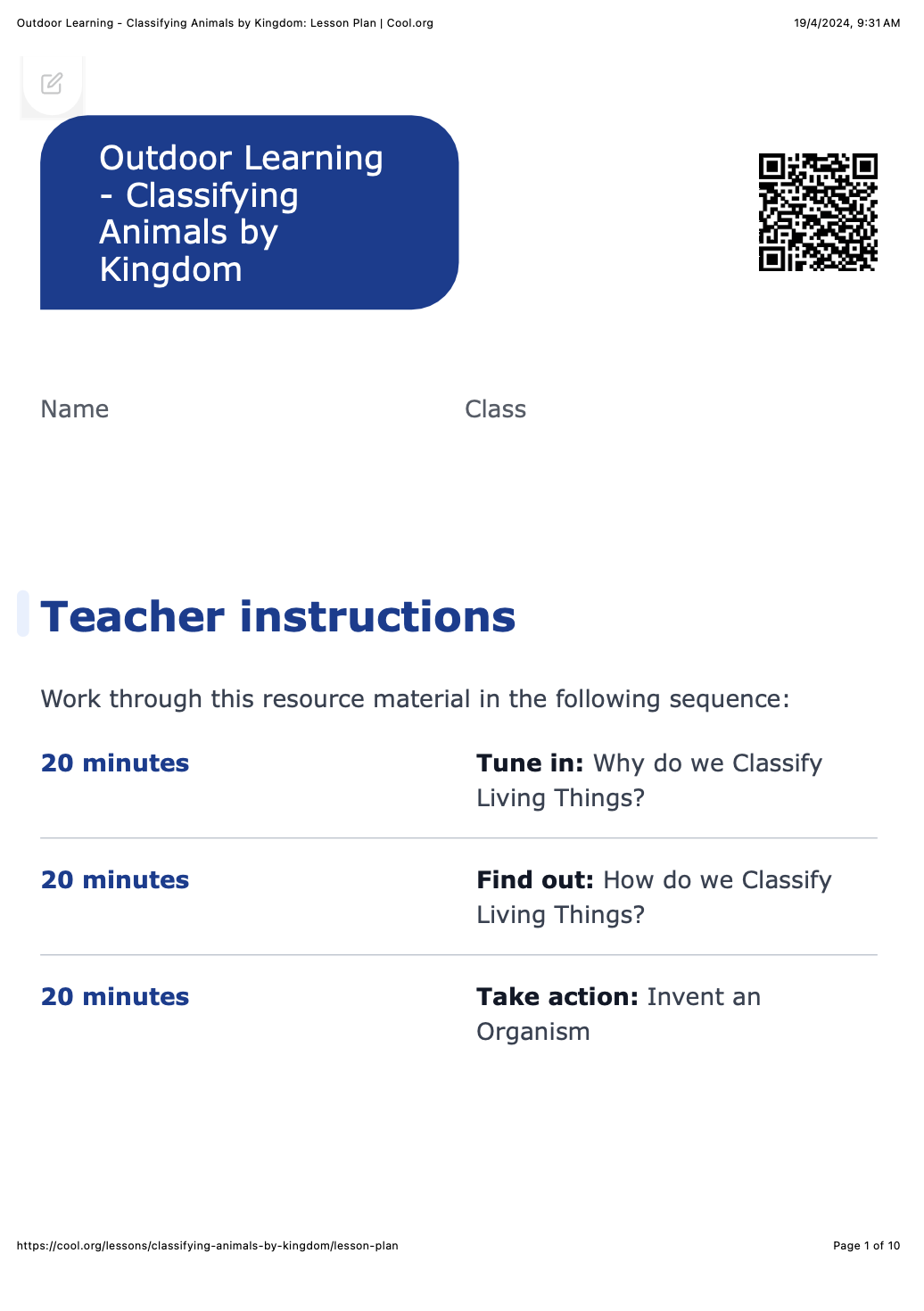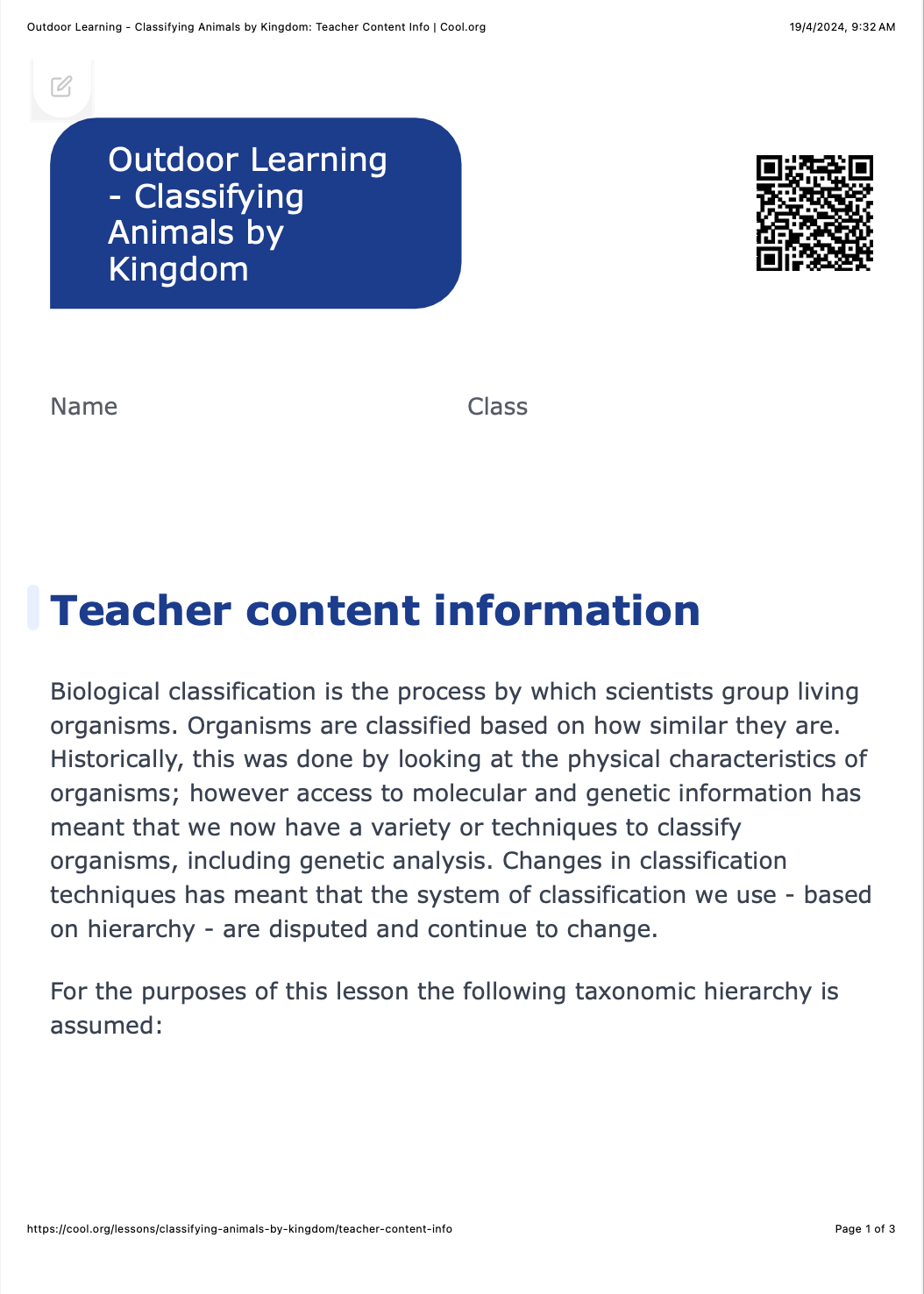Lesson summary
Students learn how scientists use a hierarchical system of classification, and how living things can be classified into Kingdoms based on their features. Students use creative thinking to invent an organism and give it a scientific name. They then classify their organism based on its physical features.
Learning intentions:
Students will...
- understand that classification involves grouping organisms on the basis of similarities and differences in particular features.
Success criteria:
Students can...
- recognise that there are many ways we could classify living things, but that the hierarchical classification system is the one that scientists around the world use.
- implement scientific conventions when naming organisms.
Lesson guides and printables
Curriculum links
Select your curriculum from the options below.
Lesson details
Curriculum Mapping
Australian Curriculum (v9.0) content descriptions:
Year 7 Science:
Students learn to:
- investigate the role of classification in ordering and organising the diversity of life on Earth and use and develop classification tools including dichotomous keys (AC9S7U01)
Relevant parts of Year 7 achievement standards:
By the end of Year 7, students explain how biological diversity is ordered and organised.
Resources Required
- Device capable of presenting a video to the class
- Features of Kingdoms Factsheet
- Animal Factsheet Template
- Kingdom Photo Sheets:
Skills
This lesson is designed to build students’ competencies in the following skills:
- creativity
- critical thinking
Additional Info
Level of teacher scaffolding: Medium - oversee activity and facilitate discussion.
This is an original Cool+ lesson.
Related Professional Learning
Investigate How Animals Are Impacted by Their Environment
This course will help inspire your students to feel optimistic about their future by investigating how animals adapt to climate change.



Welcome back!
Don't have an account yet?
Log in with:
Create your free Cool.org account.
Many of our resources are free, with an option to upgrade to Cool+ for premium content.
Already have an account?
Sign up with:
By signing up you accept Cool.org's Terms and Conditions(Opens in new tab) and Privacy Policy(Opens in new tab).